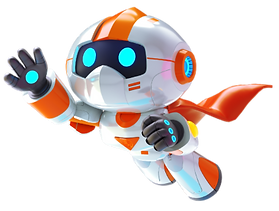
Python 201
Object-Oriented | Text Based | Age 10-14 | 49 Lessons


Python is a dynamic, high-level, free open source, and interpreted programming language. In Python 201, programmers will learn more complex knowledge of Python and put them into practical use.


Unit 01
7 Lessons
68 Challenges
1.Understand flowcharts, learn about branching structures and the knowledge of parallel 'if' and nested 'if' flowcharts.
2.Learn about loop structures and understand their applications.
3.Learn about the 'continue' flowchart, 'break' flowchart, and the comparison between multiple 'if' and 'if-elif' structures.
4.Understand the rules of nested loops and their applications.
5.Review the application of nested 'for' loops, learn extended 'print()' commands, and 'continue' in nested loops.
6.Learn about 'break' in nested loops and understand the use of flag variables.
7.Apply the programming knowledge learned in this stage to complete a small program for guessing numbers.

Unit 02
7 Lessons
69 Challenges
1.Study the 'extend()' command and how to insert numbers into an ordered list.
2.Learn about the concept and usage of two-dimensional lists.
3.Study the insertion, modification, and traversal of two-dimensional lists.
4.Learn to traverse sublists and master the traversal of two-dimensional lists.
5.Review two traversal methods, master two-dimensional traversal, and understand the two methods of traversing two-dimensional lists.
6.Master the knowledge of string traversal and slicing.
7.Learn about floating-point numbers 'float', sets 'set', understand basic data types, and be aware of data type conversion.

Unit 03
7 Lessons
60 Challenges
1.Learn how to manipulate files and understand the usage of the newline character '\n'.
2.Study the 'strip()' method to master file handling techniques.
3.Explore Chinese word segmentation and the 'jieba' library, understand parameters and the 'return' statement.
4.Gain knowledge of dictionaries and learn how to use them effectively.
5.Learning relevant knowledge of image processing, understanding the usage of commonly used image processing commands.
6.Master the three steps to create a word cloud and understand the usage of the 'join()' method.
7.Apply the programming knowledge learned in this stage to create your own creative word cloud.

Unit 04
7 Lessons
54 Challenges
1.Learn how to draw pie charts, add labels, and add design elements.
2.Study how to plot line charts and multiple line charts, and understand list comprehensions.
3.Learn how to create bar charts and grouped bar charts, and understand the application of the 'xticks()' function.
4.Study variable swapping, bubble sort, and sorting with the 'sort()' function, and grasp an overview of sorting.
5.Learn sorting of two-dimensional lists and how to plot horizontal bar charts, and understand how to read function documentation.
6.Study the usage of the 'subplot()' function and 'suptitle()' function.
7.Apply the programming knowledge learned in this stage to complete word clouds and bar charts.

Unit 05
7 Lessons
65 Challenges
1.Learn how to create characters and draw windows, understand 'on_key_down()' for key control and 'update()' for state updates.
2.Study 'colliderect()' for collision detection and add background music.
3.Implement scrolling backgrounds, character sprite switching, and control character flight.
4.Study how to switch lava character sprites, add randomly appearing obstacle characters, implement exit and scoring functions.
5.Learn to create platforms and related operations.
6.Learn to create the character Dodo, make it move along platforms, and enable left-right movement within the window.
7.Add spike platforms, game over detection, scoring functionality, and restarting the game.

Unit 06
7 Lessons
58 Challenges
1.Learn the operation mechanism of 'on_key_down()', random appearance of energy balls, master character movement with keyboard keys, and boundary constraints for character movement.
2.Study timed updates for energy balls and game over effects, and master methods for randomly appearing two types of energy balls.
3.Learn whether the mouse clicks on the character, generate number arrays, and shuffle number arrays.
4.Study the functionality of clicking on number arrays and implement timing functionality.
5.Learn the game introduction stage functionality, understand 'button' parameters, and master switching game backgrounds.
6.Review mouse clicks on characters, learn how different choices display different outcomes, and methods to trigger different problems based on different choices.
7.Apply the knowledge learned in this stage to complete the game program.

Unit 07
7 Lessons
70 Challenges
1.Learn enumeration, modulus and integer division, logical operators, and understand the usage of parameters in 'range()'.
2.Study enumeration method and combination problems, review iterating through lists, understand string indexing.
3.Study relevant knowledge of enumeration method and its applications.
4.Master applications of enumeration method, understand considerations during coding.
5.Learn about parameterless functions and functions with parameters, parameterless recursion and recursion with parameters.
6.Study infinite recursion and recursion with return values.
7.Review recursion with return values, learn to formulate expressions for calculating return values, understand recursion termination conditions.


What Students Learned

Problem-analysis and solving skills
Ability to categorize and process
Knowledge transfer skills
Scientific thinking
Abstract thinking skills
Expanded thinking skills
Inductive reasoning skills
Analogical reasoning skills
Cognitive thinking skills
Ability to apply integrated knowledge
Spatial awareness skills
Project implementation skills
Ability to understand abstract concepts
From concrete to abstract thinking skills
Logical reasoning skills
Creativity


